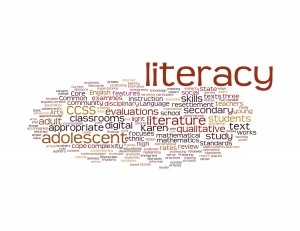Well, the first time I published this post it came out blank, and I always have a hard time producing a reproduction of a previously written and lost work, but I’ll try.
What does the title of this post say to you? To me, it provides a thread to connect the ideas we have explored throughout the duration of this course. It’s my last post of the course, so please allow me the metaphorical lenience to explore how reading the clouds might provide a way to interpret the vast shifts in communication that have occurred throughout history.
Beginning our class with the establishment of oral versus literate cultures through the tenuous theories of Ong provided a starting point to consider the impact of technology on culture. Through Ong’s lens, expressions such as “head in the clouds” are residual pieces of our oral culture histories, providing easily referenced forms of meaning where a lack of written records created a reliance on epithets for social memory. It was even suggested that the cognitive structure of an oral culture was different from a literate one in that information and communication in an oral culture was experiential, creating a far stronger bond between an individual and their environment.
However, as further readings began to soften the distinction between orality and literacy, a theory of multiliteracies began to emerge that postulated for a resurgance of orality in our digital era. Framed through the analysis of the history of printing technologies, the determinism of our cultural forms became a contested topic between cultural and technological determinism camps.
Regardless of your position on the topic above, I think it is clear that our culture and the technologies that it uses are always in flux, and our perception of our reality is shaped by the combination of both. Returning to my metaphorical tool-of-a-title, it is apparent what types of implications this may lead to. When I say reading the clouds, what stands out to me is that as a kid I was certain that no one else could see what I saw in the clouds. Whether it was an elephant or a submarine, by the time I had explained to a friend where to look, the atmospheric winds had turned it into something different. Our observations were subjective, our reality was our own interpretation of our experiences and those of others. However, a modern usage of “reading the cloud” conjurs thoughts of infinite information, completely accessible and objective. Although we all know through our relationships that our reality is still completely subjective and uniquely our own, the notion that the objective truth is only a google search away is slowly creeping into our psyche, and this will certainly impact future generations.
I work in adult literacy, and so I thought I would make a word cloud using an RSS feed from the Journal of Adolescent and Adult Literacy. What do you see? I see a submarine.


Hi,
I see a rocketship! A literacy rocketship: the kind of technology that we each construct to get us to the points we need to. As mentioned in another post, there are many uses for literacy and each of our clouds that we see, or aim for, are different. These differences in goals naturally require a variety of tools. Our multiliteracies then occur on a spectrum, and based on where we want to go, we build a literacy rocketship with the tools and parts that help us create a skill set that will get us there.
Great metaphor to begin to think about the impact of this class on your understanding!
Rebecca
Hi Ben,
I enjoyed reading the materials you offered throughout the course. You have a great writing style which captures the essence of mind; which you have done once again with your final post.
Thanks again for being a great partner earlier in this course with our typewriter project.
By the way…it’s not a submarine. It’s a bean which is lying on its side beginning to sprout knowledge.
Mel.